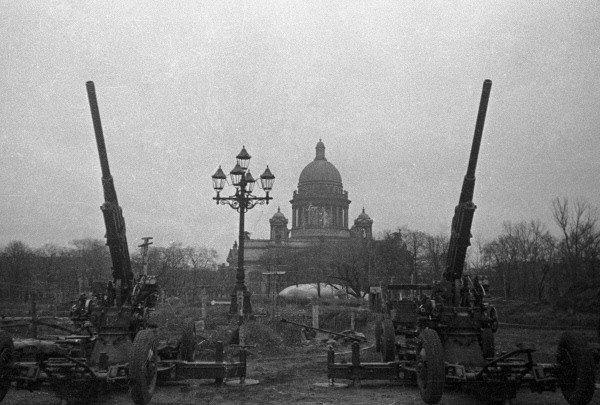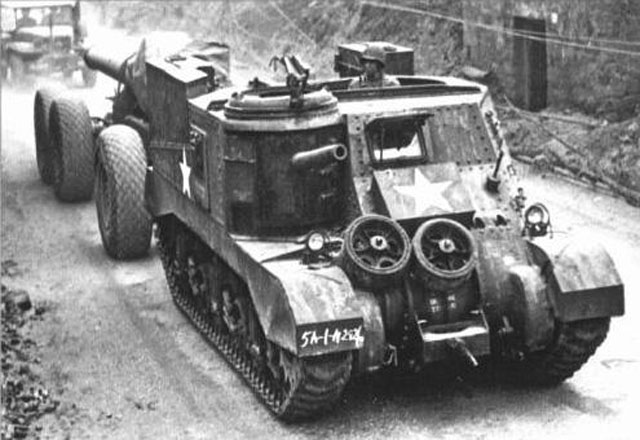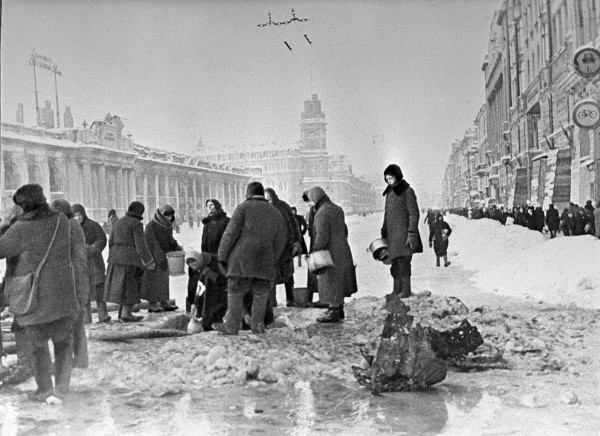Air Operations, Bismarcks
- 19 42nd Medium Bomb Group B-25s, escorted by more than 60 AirSols fighters, attack the Lakunai airfield at Rabaul. XIII Bomber Command B-24s attack Japanese Army troops near Rabaul.
- VMF-211 and VMF-321 F4Us down 7 A6M Zeros in the Rabaul area between 0740 and 0900 hours and VF-17 F4Us down 16 A6M Zeros over the Rabaul area at 0900 hours. 6 AirSols fighters are lost.
Air Operations, Central Pacific
- 6 41st Medium Bomb Group B-25s attack Nauru Island.
- 12 VMF-422 F4U pilots who ditched together near the Ellice Islands on January 25 are rescued by a US destroyer, which has already picked up 1 squadron pilot who went down alone. Together with 1 pilot who reached Funafuti on his own and 3 who are rescued elsewhere, 17 of the original 23 pilots and 1 airplane are saved. VMF-422 will be rehabilitated and returned to combat status in March 1944.
Air Operations, East Indies
380th Heavy Bomb Group B-24s attack shipping and the town area at Dili, Timor.
[Air Operations, Europe
RAF BOMBER COMMANDBattle of Berlin
Evening Ops:
- Berlin is the target as 515 Lancasters and 15 Mosquitoes are sent. 38 aircraft abort.
- The German fighters are committed to action earlier than normal, some being sent out 75 miles over the North Sea from the Dutch coast. A number of elaborate feints and diversions have some effect. Half of the German fighters are lured north by the Heligoland mining diversion and action in the main bomber stream is less intense than on recent nights. The target is again cloud-covered and skymarking has to be used. Bomber Command is not able to make any assessment of the raid except to state that the bombing appears to have been spread well up and down wind. The time over the target is 20:28-20:42. 1,704 tons of bombs are dropped including 1,036 tons of high explosives and 668 tons of incendiaries.
- Clouds over the Berlin area and strong winds cause the bomb loads to be spread across Berlin. 17 districts report damage. 413 people are killed and 20,000 are bombed out. 61 communities outside Berlin also report damage, mostly down wind to the east. 28 people are killed in those areas.
- 33 Lancasters are lost on the raid. Aircrew casualties include 172 killed, 55 POWs and 4 evaders.
- Extensive operations are carried out in support of the Berlin raid. 80 Stirlings and Wellingtons fly to the Dutch coast and lay mines there, 21 Halifaxes do the same near Heligoland, both hoping to draw the German fighters up early. 9 aircraft fly RCM sorties and 12 Mosquitos fly Serrate patrols. 18 Mosquito-bomber aircraft drop imitation 'fighter flares' away from the main bomber routes to and from the target. In effect, 140 aircraft are engaged in various operations in support of the main raid.
- 1 mine-laying Stirling is lost.
- 9 Mosquitos attack a flying bomb site at Herbouville, 8 Halifaxes fly Resistance operations sorties, and 10 OTU aircraft make leaflet flights over France.
- There are no losses.
ITALY:
- XII Bomber Command B-26s attack bridges and a marshalling yard.
- XII Bomber Command B-26s attack a rail line, a marshalling yard, and roads.
- XII Air Support Command A-20s provide close support for US 5th Army troops attacking Terelle.
- XII Air Support Command A-36s and P-40s attack defended towns and road and rail targets in and around the battle area.
- XII Air Support Command P-40s attack gun emplacements and provide on-call close air support for US 5th Army troops battling in the Atina an Cisterna di Latina areas.
- Throughout the day, P-40 pilots of the 12th Air Force's 57th and 79th Fighter Groups and the independent 99th Fighter Squadron down 16 Luftwaffe fighter over Anzio, half between 0840 and 850 hours, and half between 1130 and 1500 hours.
FRANCE:
- In an effort to prevent Luftwaffe bombers from attacking shipping and harassing the Anzio beachhead and invasion fleet, the 15th Air Force goes after three Luftwaffe bases in southern France.
- After running a gauntlet of 30 Luftwaffe fighters and while facing moderate to intense flak over the target 64 15th Air Force B-17s, escorted by 27 14th Fighter Group P-38s, attack the Salon-de-Provence Airdrome about 1215 hours. In a 30-minute running fight, the P-38s down 32 Luftwaffe fighters and damage 6 others.
- 1 B-17 and 1 P-38 are lost, 20 B-17s are damaged
- 68 15th Air Force B-17s escorted by 19 1st Fighter Group P-38s, attack the Montpellier/Frejorgues Airdrome about 1225 hours. Approximately 20 Luftwaffe fighters attack the P-38 escorts, but the leave the bombers alone. 3 Bf-109s are downed and several others are damaged or possibly downed.
- 1 P-38 is lost, 1 B-17 is damaged by flak
- In the third phase of the mission 27 450th Heavy Bomb Group B-24s, escorted by 28 P-38s, crater the runways and damage the facilities at Istres-le-Tube Airdrome with 80 tons of bombs about 1235 hours. No enemy fighters are encountered.
- 1 B-24 is lost, all the rest of the B-24s are damaged to some degree
- Overall, the attack is successful in that Montpellier/Frejorgues and Salon-de-Provence Airdromes are closed down and Istre-le-Tube can operate onl at a diminished capacity.
- 15th Air Force P-38s sweep the area around Rome.
- 15th Air Force P-47s sweep the area around Florence.
Air Operations, Marshalls
9 41st Medium Bomb Group B-25s attack the Wotje Atoll. 23 531st Fighter-Bomber Squadron A-24s and 10 VII Fighter Command P-39s attack the Mille Atoll. 7 VII Bomber Command B-24s mount a dusk attack against the Taroa airfield on Maloelap.
[Air Operations, New Guinea
42 V Bomber Command B-24s attack the Lorengau airfield on Manus and the town in the Admiralty Islands. B-24s attack shipping at Sorong and MacCluer Gulf. More than 70 B-25s and A-20s, and V Fighter Command P-39 fighter-bombers are joined by RAAF bombers in an attack against the Bogia and Madang areas.
[Eastern Front
The Siege of Leningrad ends after 872 days. Gen Leonid Govorov, commanding the Leningrad Front, issues a special order of the day announcing that the blockade of Leningrad has been completely lifted. Between 1,300,000 and 1,500,000 people have died of which 100,000-200,000 were military. Nearby, Valosovo, Tosno and the railway line from Tosno to Lyuban are taken restoring at long last communications between Leningrad and Moscow. In the south Shpola is captured by Konev's forces as the encircling attacks proceed.
NORTHERN SECTORGovorov announces that the siege of Leningrad is completely lifted, Tosno and Valosovo falling to the 8th Army. The 67th, 8th and 54th Armies threaten to isolate the XXVIII Corps and elements of the I Corps.
SOUTHERN SECTORThe 60th Army launches strong attacks around Rovno but the going is difficult.
Shpola falls to the 5th Guards Tank Army while the 6th Tank Army captures Lysyanka, the spearheads of the 1st and 2nd Ukrainian Fronts drawing closer together.
[Italy
In the southern sector of the 'Gustav' Line the divisions of the British X Corps try again to reinforce the bridgehead on the right bank of the Garigliano. Under an intensive German barrage the 46th Div makes for Monte Juga and the 5th Div for Monte Natale which is west of the village of Santa Maria Infante. Further north the regiments of the 34th Div of II Corps takes Height 771 and Monte Maiola, north of Cassino, advancing very slowly on account of the Germans' effective defense. The 168th Regt of the 34th Div, having taken Caira, pushes on towards Monte Cairo.
The 3rd Algerian Div, French Expeditionary Corps, is driven from Monte Abate by German counterattacks.
[New Britain
The Cape Gloucester bridgehead is further expanded by the Marines' capture of Natamo in the northwest.
[Occupied France
39 aero engines are destroyed in a Resistance raid on the Bronzavia plant in Lyons.
[Pacific
- The US submarine Swordfish (SS-193> in an attack on a Japanese convoy about 130 miles south of Tokyo Bay sinks the gunboat Kasagi Maru (3140t).
- The US submarine Thrasher (SS-200) attacks a Japanese convoy and sinks the transport Kosei Maru (2705t) and merchant cargo ship Kikuzuki Maru (1266t) about 70 miles southwest of Formosa.
United States, Planning
Conference at Pearl Harbor. In a rejection of the Sextant agreement by the CCS that the Central Pacific should be the primary means for the attack on Japan, SWPA, POA, and SOPAC planners believe that New Guinea to the Philippines is the better choice. Two alternatives are discussed. The first is to capture Truk and concentrate on the Mariana and Palau Islands. The other option is to bypass Truk and attack the Palaus directly about one month earlier than planned. Nimitz, shaken by the cost of securing Tarawa, has less faith in the his original plans outlined in GRANITE. The quickest approach to Japane may be through the Philippines and the coast of China. Truk could be bypassed, then an attack through the Marianas to the Palause could be launched with the objective of supporting MacArthur's New Guinea offensive. The goal is the Philippines, with the main effort in SWPA under MacArthur's command. Adm King, COMICH, send Adm Nimitz a note after the conference stating that 'The idea of rolling up the Japanese along the New Guinea coast...and up through the Philippines to the exclusion of clearing our Central Pacific line of communications...is to me absurd. Further it is not in accordance with the decisions of the Joint Chiefs of Staff.'
[War Crimes
Over the next several days, Britain, the United States and Australia formally protest about the ill-treatment of prisoners of war by the Japanese, as more information comes to light. All three nations promise that there will be tribunals to investigate and punish those responsible.
[Images from January 27, 1944
|
|
Anti-aircrafters Guarding the Skies of Leningrad |
 |

